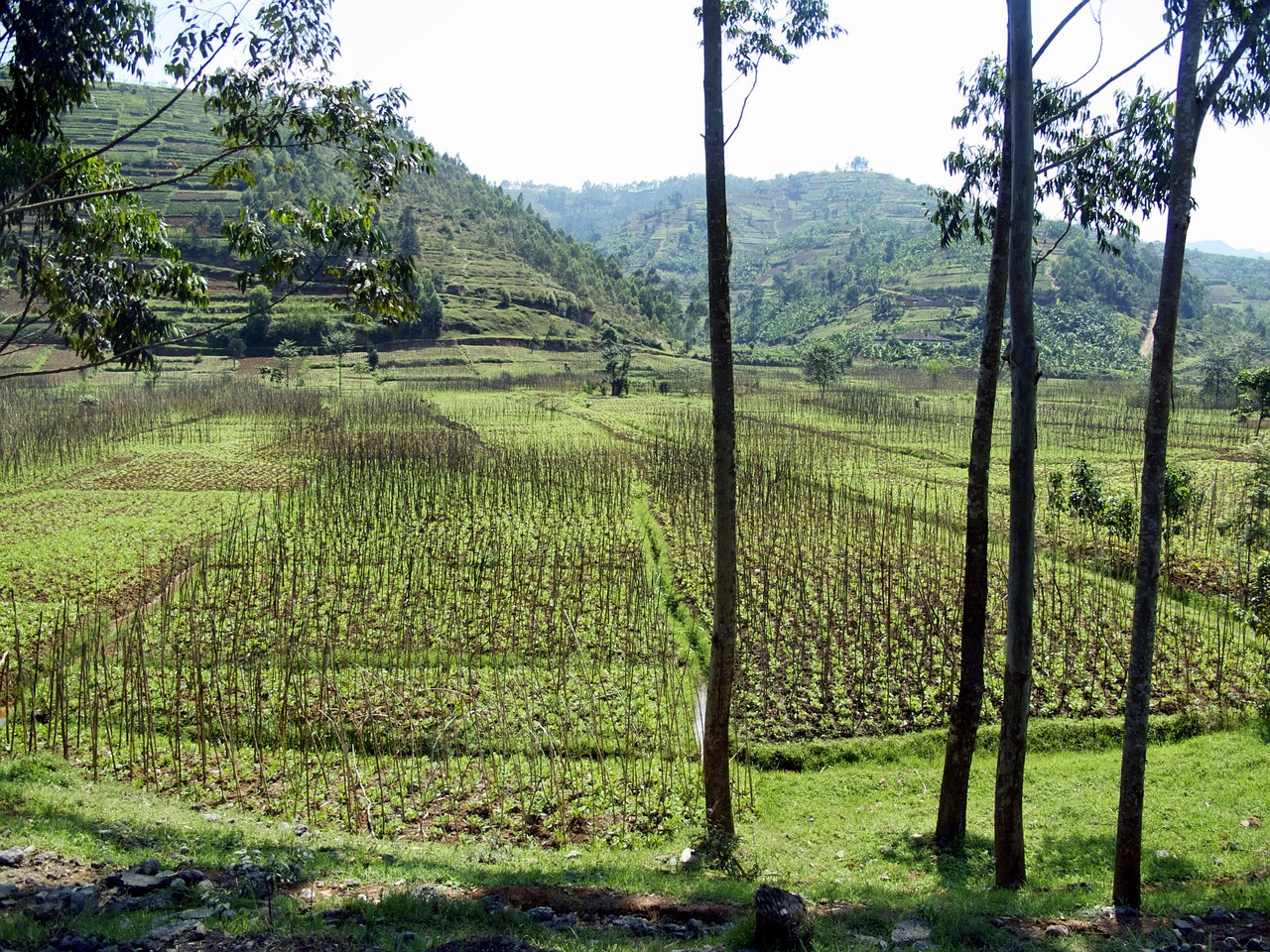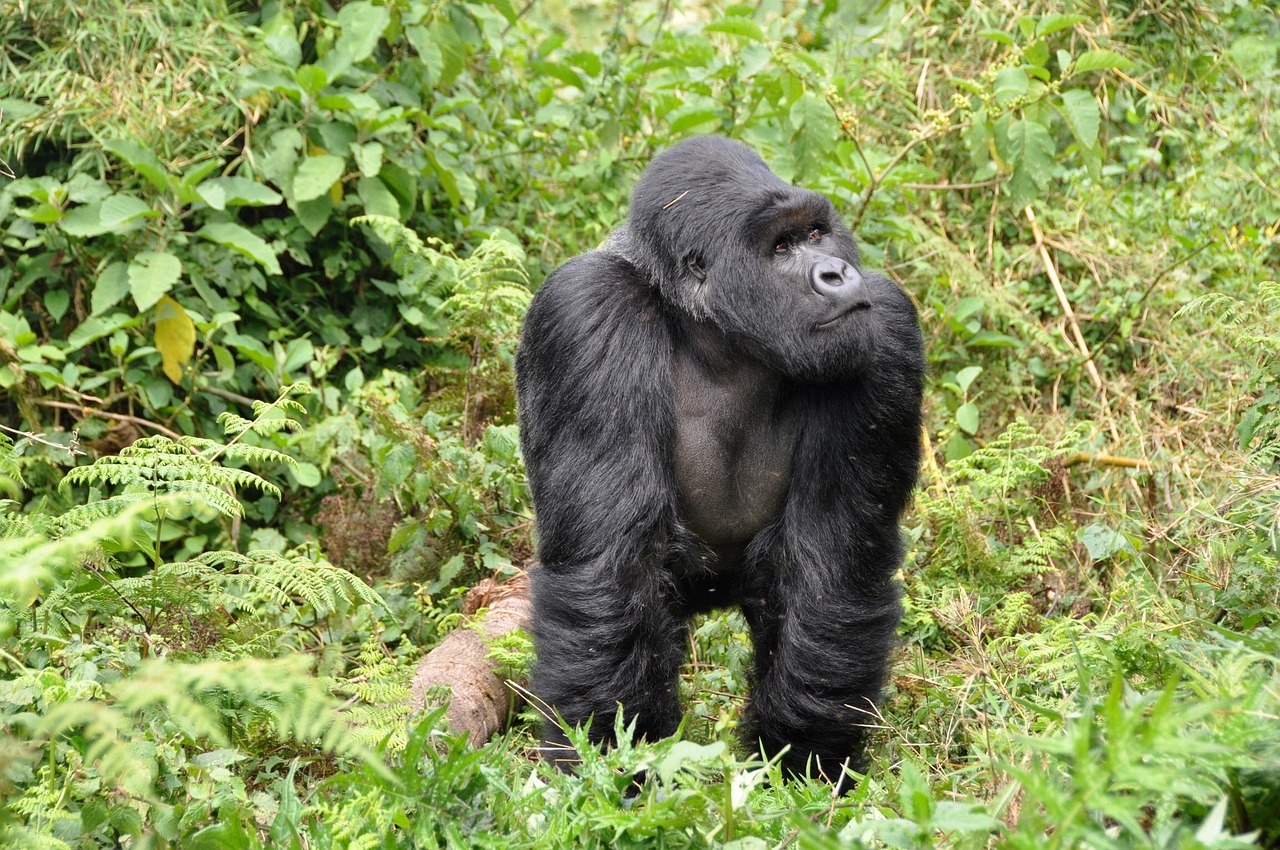Dawn breaks in the Virunga Mountains. The first rays of sunlight stain red the faint mist that moves through the valley. Covered by a dense jungle, the great old volcanoes offer shelter to one of the most fascinating creatures on our planet: the mountain gorillas.
This is the image we often get of Africa, that of a vast expanse of wilderness where beauty and exotic animals rule the continent. In contrast, the reality is that in many African countries today, agricultural land and urban areas are predominant. Thus, development is increasingly encroaching on the natural spaces shown in documentaries.
Rwanda is one of the poorest and most densely populated countries in the world. The areas adjacent to the Volcanoes National Park, where several groups of gorilla live, exceed 1000 people per km2. Most of them depend on agriculture, which exposes the park to severe pressures from adjacent communities seeking resources to survive.

In the 1970s and 1980s, poaching and habitat destruction brought mountain gorillas to the brink of extinction, with fewer than 300 individuals remaining. If this had continued, there would probably no longer be any fascinating creatures in the dense jungle of the old volcanoes today. However, since then their population has been increasing and in 2018, 1063 specimens were counted. This recovery has only been possible because conservation efforts have had a powerful ally: tourism.
In 1978, Volcanoes National Park lacked a tourism strategy. The fee to see the gorillas was only $5. After studying the tourism sectors of other countries such as Kenya, Rwandan leaders realized that it was better to pursue high-end tourism, characterized by expensive prices and a lower volume of visitors. Mountain gorillas proved to be ideal for this model, as they are scarce, difficult to access and require caution. Therefore, they increased fees on multiple occasions, currently exceeding $1,000 per person. Rwanda's tourism sector has become the country's largest source of income, generating around $200 million annually. Even so, this income is of no use if the communities adjacent to the park barely benefit from it. The only way to address the most important conservation problems is for local people to gain more from tourism than they could by extracting resources from the park. That is why in 2005 the Rwandan government launched a revenue sharing scheme with the aim of sharing 5% of the park's profits with the communities. Since then, schools, health centers and water tanks have been built, which have improved the quality of life of the people.
However, the effectiveness of the revenue sharing plan in conservation is currently under debate. More than a decade later, illegal activities and poaching have decreased, but continue to threaten gorillas. The poorest segments of the population remain marginalized and are barely aware of the existence of revenue sharing. They feel that only the government benefits from tourism, indicating that there is a missing link in the conceptualization of the plan and its implementation. Among other things, the plan appears to have challenges associated with structural and political constraints and competing interests between different organizations.

Finally, we cannot forget the role that tourists themselves play in gorilla conservation. Most parks follow international guidelines that were established to minimize the risk of disease transmission and to avoid stressing out the gorillas. The number of tourists per group should not exceed eight, observation hours are limited to one hour and a minimum space of seven meters should be left between the tourist and the gorilla.
Unfortunately, in practice these measures are not always as they should be. One study found that of the videos that tourists uploaded to the internet showing their experience, 40% of the humans were within one meter of the primates. As a result, the gorilla population in the Virunga Mountains has suffered several respiratory epidemics from humans that have put their conservation at risk. It is crucially important that tourists understand the responsibility that comes with their practices and comply with the established rules.
The road to sustainability is not an easy one, and requires all parties involved to play fair. Although the gorilla tourism plan is not perfect, it is currently considered an example to follow given the success it is having for their conservation. Without going any further, in 2018 the IUCN changed its conservation status from critically endangered to endangered. There is still much room for improvement, but we are on the right track.













